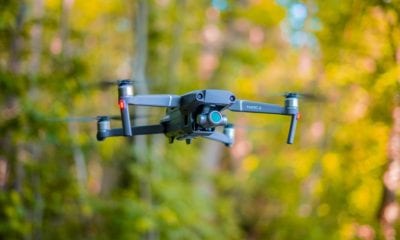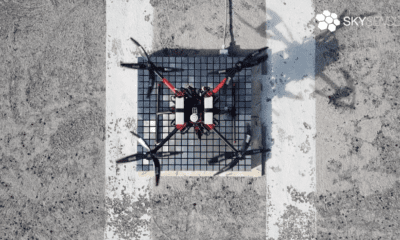Testing DJI Drones for Use in Fire and HazMat Response
Wildfires this year in the US have reached epic proportions, with incidents stretching all the way from the state’s northern to southern border resulting in what has been reported to be the worst in history according to CNN.
With rain levels dropping below 50% of monthly averages, there is an ever increasing need to prioritise allocation of water resources very carefully, by identifying hotspots and other important factors such as vegetation density and wind direction.
In addition, fires around industrial and urban areas have the potential to pose risks to firefighters, not only because of the fire danger, but also because of the possibility of hazardous chemicals and other materials.
Increasingly, fire fighting units are turning to drones to assist them with these challenges.
Recently, a German fire brigade based in Hechingen near the Swiss border, put DJI drones through their paces when fires posed operational and tactical issues.
Using a DJI’s Matrice 210 commercial grade drone, a Zenmuse XT thermal camera, and an X4S high definition imaging camera, commander Maik Bulach described how the team deployed the drone to assist with gathering intelligence about the fire.
“The biggest advantage came to light during the search for hotspots and extinguishing them. The simultaneous deployment of the XT and X4S provided me with exact information about where to delete the hotspots and how long until we reached a safe state,” Commander Bulach explained to Commercial Drone Professional.
UAS coordinator and firefighter from the Southern Manatee Fire & Rescue District in Florida has also been using DJI drones for fire and hazardous material response.
He has discovered one very useful fact about the DJI M210 drone that is essential for firefighters: it passes flammability tests and is impervious to certain explosions.
In a video released by the dronemaker yesterday, Ganatis explains how his team decided to employ DJI drones.
“We looked at other options but platforms like DJI Inspire and M210 have much more capabilities and are much more effective,” he says.
But before hazmat teams such as Ganatis’ can respond to fires, they must be sure that their equipment is fit for purpose.
“We wanted to make sure the drone won’t cause a spark that would ignite something flammable,” he says.
To do this, Ganatis and his team created a box that they could fill with the gas propane, emulating a flammable atmosphere in which they could place the drone.
“The results were very promising,” he continues, explaining that the drone was left with motors on for an extended amount of time to see if a spark created by the motor would ignite the gas.
The team then gave the M200 the ultimate test – they tried to blow it up – and it survived.
While the rotors had significant warping, all the team needed to do to get the drone flying again was replace the rotors and batteries.
“To our amazement the aircraft took off immediately. It was pretty impressive,” he concludes.























